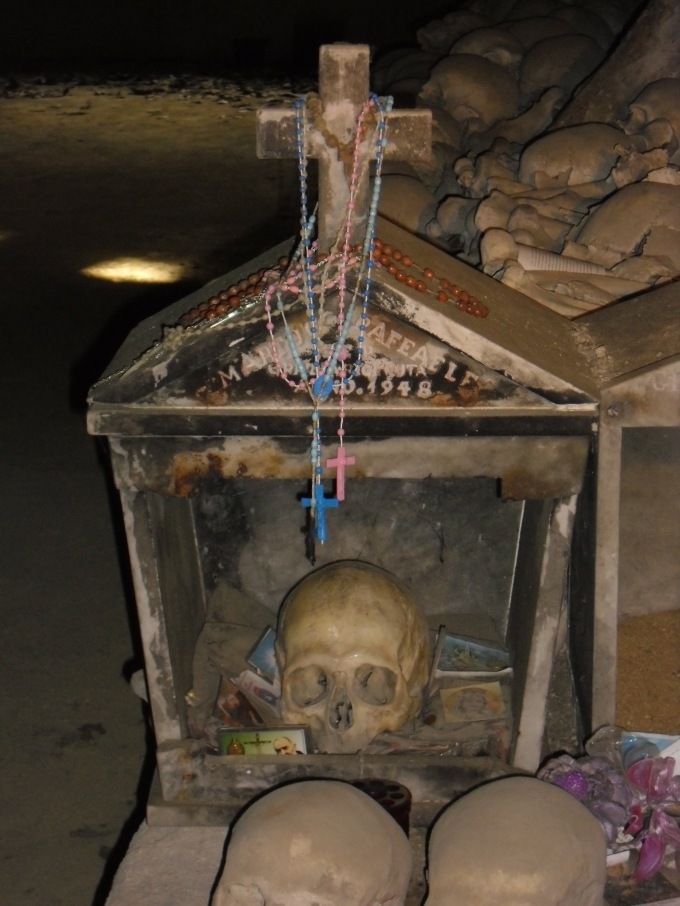This rosary is typically prayed every day during the octave of the festa dei morti (feast of the dead), known more officially in Italian as the Commemorazione di Tutti i Fideli Defunti (Commemoration of All Deceased Faithful), and among English-speaking countries as All Souls’ Day. In many Catholic countries, All Souls’ Day (November 2) is a time for remembering the dead. It can be celebrated by praying, visiting and cleaning up loved ones’ graves, making offerings of food or flowers, or paying for masses to be said in honor of the departed.

A man eats at a tomb in San Demeterio Corone, Calabria on All Souls’ Day. Via Benedicaria.
The octave lasts from November 2 to November 10. If you wish to pray for the Holy Souls in Purgatory as is done in Sicilian folk tradition, you can use the words below. Sicilian rosaries can be prayed on standard rosary beads, reciting one posta for each of the large beads, and one grani for each of the small beads. (More official prayers for the dead can be found in the Raccolta, the pre-Vatican II guide to indulgences. A free PDF is available online here.) I have included an English translation, but the Sicilian is pronounced very similar to Italian if you feel comfortable with that language.
This rosary from Sicilian oral tradition was originally transcribed and published by Sara Favarò in A Cruna: Antologia di Rosari Siciliani. I have chosen to translate “arrifriscati” (lit. “refresh yourselves”) as “be cooled”. “Refreshment” in Southern Italian and Sicilian magico-religious thought is relief from the heat and suffering of Purgatory. Souls grateful for refreshment are disposed to work miracles on behalf of those who pray for them. The concept is similar to the idea of cooling heated spirits in spiritism and African Diasporic Traditions.
Siciliano
(Posta)
Per li setti battitura
chi patì nostru Signuri
pi li chiova arribuccati
Armuzzi Santi, arrifriscati.
Armi Santi, Armi Santi
iò sugnu sula vui siti tanti
pi la nostra orazioni
livatimilla ‘sta cunfusioni.
Quannu vui ‘n celu acchianati
pi nui piccatura priati
arma ‘n celu e corpu ‘n terra
recam eterna.
(Grani)
Armi Santi e santi veri
Armuzzi Santi miserere
e Maria pi so buntati
Armuzzi Santi arrifriscati.
English
(Posta)
By the seven beatings
that our Lord suffered,
by the twisted nails,
Holy Souls: be cooled.
Holy Souls, Holy Souls,
I am one, you are many.
By our prayer,
take away from me this confusion.
When you ascend to heaven,
pray for us sinners.
Soul in heaven and body in earth,
eternal peace.
(Grani)
Holy Souls and true saints,
merciful Holy Souls,
and Maria by her goodness,
Holy Souls: be cooled.
